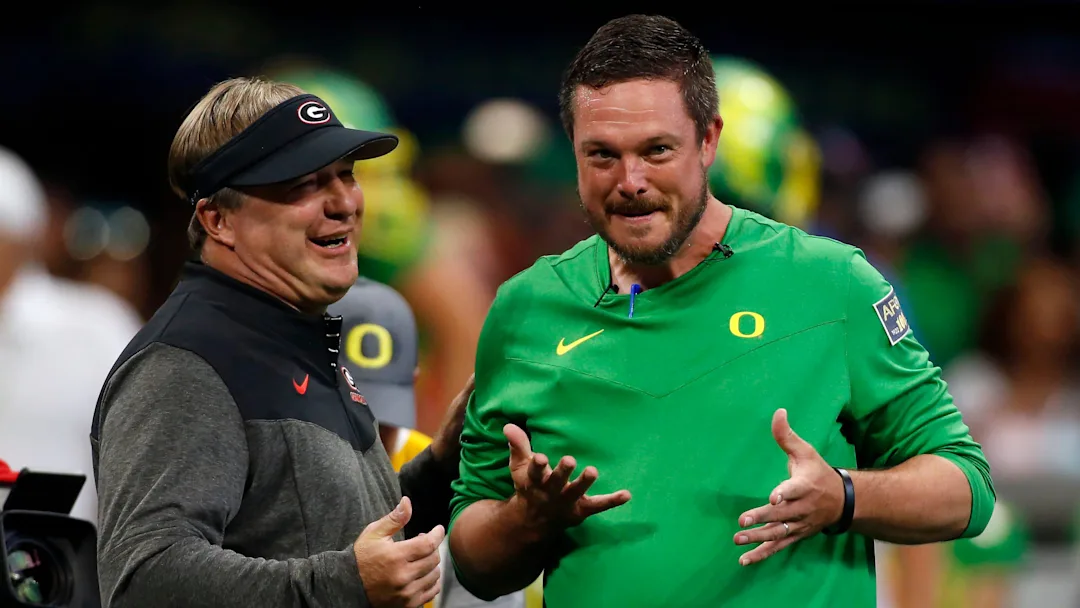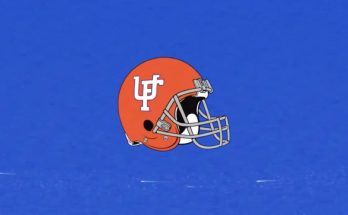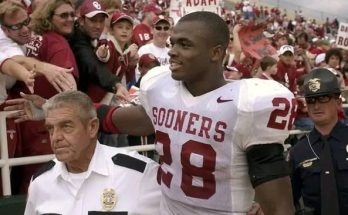There was a time, not long ago, when the idea of any college football program rivaling the dominance of Georgia seemed laughable. The Bulldogs, with their relentless defense, explosive offense, and conveyor belt of NFL-ready talent, reshaped the modern era of college football. Yet now, in a sport that evolves at breakneck speed, one analyst has thrown gasoline on the flames of speculation and rivalry: “Oregon is the new Georgia.” Bold? Absolutely. Premature? Maybe. But the numbers, energy, recruiting trends, and program culture suggest the Ducks may be flying into a stratosphere once reserved only for the powerhouses of the SEC.
It’s not just hype. It’s trajectory.
At the heart of this declaration is the eye test—something that transcends analytics and dives deep into what programs look like. Georgia under Kirby Smart became famous for their discipline, their recruiting class rankings, their size in the trenches, and their suffocating defense. Those were the pillars. And now, under Dan Lanning—ironically, a former defensive coordinator under Smart—Oregon is beginning to mirror those very same traits, but with a West Coast twist.
Lanning has brought SEC firepower to Eugene. It’s visible in the Ducks’ physicality, their recruiting prowess, and how they approach every facet of their program with urgency. Recruits aren’t just picking Oregon because of Nike anymore. They’re picking Oregon because it feels like the best chance to win and develop. That’s what Georgia offered at its peak. And now Oregon is doing the same.
The Ducks are no longer content being “good for the Pac-12.” That narrative died the moment Lanning walked onto campus. The expectation now is national dominance. The kind where you don’t just make the College Football Playoff—you win the whole thing. And the Ducks are building a roster with that goal in mind.
Oregon’s 2024 recruiting class was a major turning point, ranked in the top three nationally, filled with elite defensive linemen, explosive offensive skill players, and athletic, long defensive backs. In other words, it looked eerily like Georgia’s blueprint. Players who would have traditionally leaned SEC—kids from Texas, Florida, and even Georgia—are choosing the Ducks. That’s not by accident. That’s development, culture, and proof of concept.
Then there’s the transfer portal, where Oregon has become just as aggressive and savvy as the top SEC programs. Lanning and his staff have shown a knack for identifying not just talent, but fit. They’re not bringing in players to simply fill holes—they’re adding competitors, leaders, and future draft picks. Georgia mastered this approach during their title runs, constantly evolving without rebuilding. Now Oregon is doing the same, only with a more innovative and flexible offensive mindset that can morph week to week.
It’s easy to forget how young Dan Lanning is. But that’s also part of the intrigue. He’s in his thirties, already a head coach of a blue-chip program, and he’s operating with the lessons he learned firsthand in Athens. He’s mixing Georgia’s structure with Oregon’s flair. The result? A program that has toughness in the trenches and explosiveness on the perimeter. A defense that flies to the ball. An offense that scores in bunches. A team that doesn’t just want to compete with Georgia—they want to become Georgia.
And maybe they already are.
A key reason analysts are making the comparison is how Oregon now controls games. It’s not just about winning anymore—it’s about suffocating opponents. In 2024, Oregon had the second-ranked scoring defense in the nation and ranked top-five in sacks, tackles for loss, and third-down percentage. That kind of dominance doesn’t happen overnight. It takes recruiting, development, and system buy-in. That’s exactly what Smart built. And now Lanning is cultivating the same thing.
Oregon’s offense also makes them uniquely dangerous. While Georgia under Smart was often efficient but methodical offensively, Oregon leans into innovation. They don’t just execute—they overwhelm. With a strong quarterback pipeline and elite wide receiver talent, the Ducks can win shootouts or grind you down in the fourth quarter. The balance is there. And with their new offensive coordinator, they’ve blended aggression with ball security—a deadly mix for any opponent.
Facilities and investment can’t be ignored either. Phil Knight and the Oregon brand have always given the Ducks a visibility advantage. But now, that flash is paired with substance. Oregon’s strength and conditioning program is elite. Their nutritional sciences, academic support, and sports psychology departments rival anything in the country. It’s not just a good place to play—it’s a great place to grow. That’s the same pitch Georgia made. And it worked.
Still, what truly separates Georgia in recent memory was how they played in big games. The Bulldogs never looked out of place on the sport’s biggest stages. Oregon, in the past, often did. But that’s changing. The Ducks no longer flinch in primetime. They show up, often looking like the faster, tougher, more prepared team. The 2024 season included dominant wins over ranked opponents, a near-flawless road record, and a narrow loss to Michigan in the playoff that many believed could’ve gone either way. Oregon didn’t collapse. They competed. They belonged.
It’s also telling how other coaches now talk about Oregon. Quiet respect has turned into public admiration, and in some cases, concern. Multiple Power Five coaches have cited Oregon’s “SEC-level front seven” and “NFL frame receivers.” That’s not hyperbole. That’s the truth. The Ducks now recruit and play like the nation’s elite. And they do it with a chip on their shoulder, aware that skepticism still lingers in certain corners of the country.
But perhaps the biggest piece of this puzzle is the fear factor. Georgia used to terrify teams before they even got off the bus. That aura made every game feel like survival. Oregon is building the same mystique. Teams know when they play Oregon, they’re in for a long, physical, demoralizing day. They’re going to get hit. They’re going to get run past. And by the fourth quarter, they’re going to be exhausted and out of answers.
Recruiting isn’t slowing down either. The 2025 class is already on pace to challenge for No. 1 overall. Oregon is in on multiple five-star prospects and has a legitimate shot to land top players from across the country. That kind of reach was once reserved for SEC powerhouses. Not anymore. Oregon has national pull. They’ve crossed over into that rare territory where wins breed wins, and elite players breed more elite players.
Of course, Georgia fans will point to the hardware. And they should. National championships matter, and the Bulldogs have more recent banners than almost anyone. But dominance isn’t always measured in trophies alone—it’s measured in sustained excellence. And all signs point to Oregon having that for years to come.
The College Football Playoff is expanding. That means more opportunities, more stages, more shots to prove your worth. Georgia used that structure to become a juggernaut. Now Oregon has the same chance. And with a staff that knows how to win in that format, the Ducks aren’t just participants—they’re contenders.
So when a college football analyst says Oregon is the new Georgia, it’s not a slight to the Bulldogs. It’s a recognition of growth. Acknowledging that what Georgia built has inspired another program to follow that path—and perhaps even evolve it further.
In the end, football is a copycat game. Programs borrow philosophies, structures, and ideas. But only the great ones implement them and make them their own. Oregon isn’t trying to be Georgia 2.0. They’re trying to be the best version of Oregon—a version that just so happens to look a lot like a certain SEC dynasty. And maybe, just maybe, they’ll finish what Georgia started: a true college football empire, this time based in Eugene.
Because if the Ducks keep rising like this, that analyst might not be early.
He might be right.



